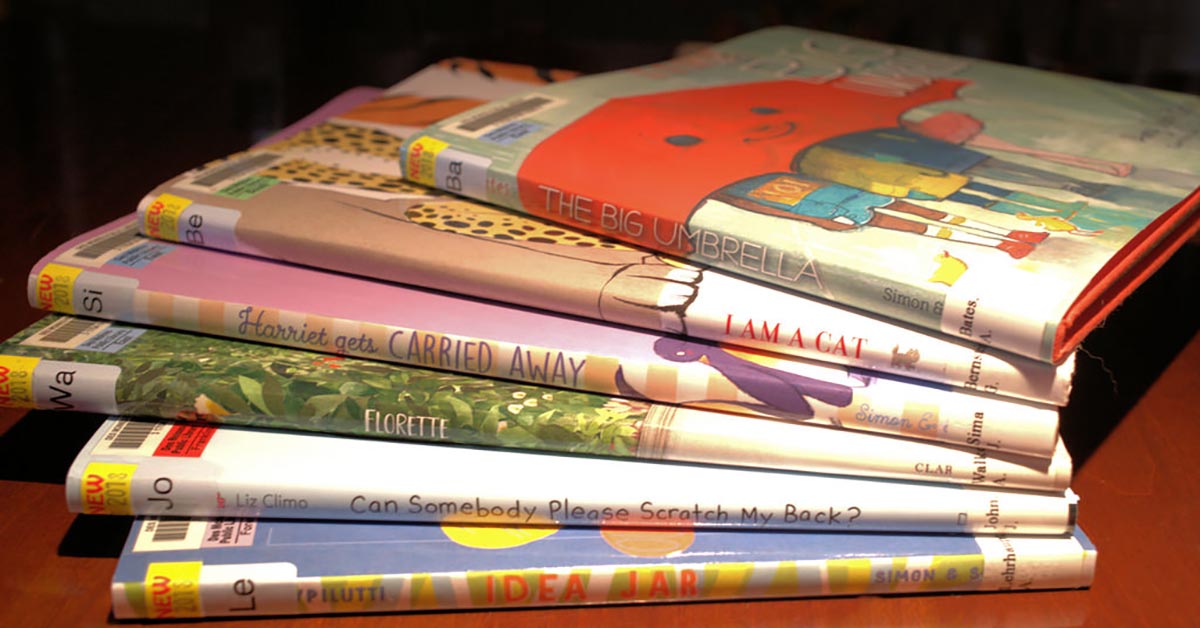Maybe you’re burned out on patient care. Maybe you’re trying to figure out how your PT education and practice can help you forge a new path. You’re trying to think practically, of course—after all, your family, friends, and colleagues would think you were bonkers to make a total 180 at this stage of the game. Maybe it’s too late to try something totally new anyway…right?
WRONG!
You’ve probably already considered some traditional non-clinical career transitions from regular, run-of-the-mill physical therapy practice, including:
But why not think out of the box even more? Why not consider something a little bit dreamier, a bit…dare I say…magical?
Over the years, I’ve lost track of how many people have confessed to me that they’ve secretly always wanted to write stories for kids—physicians, farmers, lawyers, Microsoft executives, even a helicopter pilot or two!
There’s something magical about those stories that meant so much to us when we were small folks, and it seems the dream of writing such stories is hidden deep in many adult hearts. I believe that physical therapists are perfectly positioned to learn how to write great kidlit.
Don’t believe me? Read on…
This post may contain affiliate links or codes. This won’t increase your cost, but it helps keep TNCPT alive, and free of annoying ads! Thank you for your support. 🙂
Just a few reasons why PTs can become great kidlit writers

We’re disciplined.
This one’s obvious. Nobody makes it through a grueling DPT program (not to mention crushing that NPTE!) without some serious self-discipline. Those bleary-eyed midnight hours you spent in the lab, refusing to give up until you learned that stinking brachial plexus cold, are the perfect training ground for the tenacity needed to break into today’s formidable—yet surmountable—children’s publishing market.
We can take feedback.
Remember those massive CPIs you and your CI slogged through during each of your clinicals? It seemed like overkill then, but now you definitely know how to take feedback from others…and from yourself. That tough skin and self-reflective ability are ideal practice for working with sharp-eyed editors…and for weathering those inevitable harsh reviews of your published books.
We’re human nature experts.
Part of what makes PTs great clinicians is figuring out what makes people tick. Getting to know our patients and figuring out how to motivate and work with people from all sorts of backgrounds is part of every good PT’s toolbox. Essentially, we’re getting to know stories—oodles of them!—just by listening to and working with our patients. What better practice for making up tales of your own?
We know disability inside and out.

If it’s been awhile since you’ve delved into the world of children’s literature, the new developments may surprise you. Publishers and readers are hungry for layered stories featuring all types of diversity. Characters with disabilities, while still woefully underrepresented, are definitely on the radar of today’s agents and editors, and it can be tough to find authors who can write these characters with nuance, respect, and accuracy. Alongside writers from within the disability community, PTs can bring a unique depth of experience to the table.
Empathy is our middle name.
In order to brainstorm personalized adaptations and modifications for our patients, we PTs spent a ton of time putting ourselves into other people’s shoes. At the same time, our role as motivators means that we strive to empower our patients by showing empathy, as opposed to more disempowering attitudes of sympathy or pity. This mindset can go a long way when it comes to crafting fictional characters who have independence and agency, no matter what obstacles they may face in your stories.
Creativity is our second middle name.
Coming up with ideas is easy…writing them down can be a bit trickier. Stories don’t always behave. They dead-end, make illogical plot leaps, or sometimes just don’t sound as good once you read what you’ve written on the page. Finishing a story takes lots of creative thinking—and a willingness to run into a few figurative walls along the way! Fortunately, all those years of troubleshooting your patient treatments to nail down what works—and what doesn’t—is the perfect warm-up act.
We know how to have fun.
When you come right down to it, children want to read stories that are engaging, exciting, and just plain fun. And, as we already know, it’s hard to find a more fun-loving bunch of people than PTs. That playful, joie de vivre attitude is the perfect seed to begin growing amazing tales for kids.
Maybe you already know you’d be a great kids’ writer…but aren’t sure where to start. Never fear—there’s a list for that, too! If there’s one thing we PTs love, it’s concrete detail. Hard, cold information. A straightforward path from A to B. While the path to publication is rarely a simple, straight line (it’s really more of a labyrinth, if you ask me), following these basic steps can take you a long way in the right direction.
How to start writing children’s books

READ! A Lot.
Okay, this one seems like a no-brainer, but you’d be amazed by how many people want to write for kids, yet haven’t read a book in years. If you’re serious about writing—especially for this age group—I can’t stress enough how important it is to actually read in this genre.
And please, please, don’t just stick to the books you remember from when you were a kid. I promise you—trends have changed and so has the market! Spend some serious time at the library or bookstore and get to know what today’s kids are reading. For you pediatric PTs out there, you have a perfect resource at your fingertips. Ask your patients what they’re reading, which books they adore and why. Then go and read those books yourself!
Evaluate like a PT.
Okay, so you’ve read 10, 20, maybe even 50 current books of the sort you’d like to write. Now it’s time to put those incisive clinical eval skills to work and critique them like a PT. What about them worked? What didn’t?
Can you think of ways that you’d have written them differently? If so, why? This part of the process is a lot of fun, because it’s where you get to let your imagination go wherever it wants. Critiquing other books is a great way to refine your own story ideas. Eventually, though, you’ll have to actually let the rubber meet the road and…
WRITE SOMETHING!!
Another no-brainer, yet I believe this step trips up more aspiring writers than any other. Ideas are easy. They float around our brains like candy-covered butterflies frosted with glittery unicorn dust. They seem effortless…and then we sit down at our computers and try to capture them on the page. Suddenly, our beautiful butterfly turns into a big, slimy slug.
Don’t panic—this happens to all writers, all the time. Writing is hard.
Just like becoming a PT, tons of people want to achieve writing children’s books, but not everyone has what it takes to see it through. Thankfully, tenacity isn’t a problem for anyone who has survived both PT school and the trenches of clinical practice. So, take a deep breath and get some words onto the page! If confronting that blank computer screen is simply too intimidating, you’re not alone.
Sometimes I overcome writer’s block by taking a walk and dictating story scraps into my phone. I don’t know whether Hemingway would approve, but I find that this can actually trick my brain into relaxing enough to get the words flowing.
Finish what you write.
There comes a point in every writing project where all hope seems lost. The plot sags, the characters seem boring, and you have no idea how you’re going to actually make the story come together. If you’re in the middle of your story and you’re convinced you’ll never be good for writing anything more creative than SOAP notes…congratulations! You’re officially a writer!
One of the wisest writing teachers I ever had told me that all good writers are secretly convinced their writing sucks.
So, when you reach that mid-project low point where debriding a Stage IV decubitus seems easier and more fun than finishing your story…take heart! You’re in great company, especially if you follow the next step and…
Find a friend.
This one is important. Writing is a lot different than the bustling world of patient care. Writing is solitary, and can get downright lonely—which isn’t great if you’re feeling insecure about your project. A critique partner or small writers’ group is a great way to build community, find moral support, and build your own critical reading skills as you work toward a writing life.
If you don’t have any writer-ish friends (at least none who will admit to it!), there are plenty of resources out there to help you find your folks. Check out organizations like SCBWI or NaNoWriMo to get started. Your local librarian is also likely to be a great source of information on other aspiring writers who might be lurking around in search of a critique partner in your area.
Revise, revise, revise.
You’ve read eleventy-hundred kids’ books. You’ve found and nurtured a critique group. You’ve worn out your keyboard with your furious, late-night wordsmithing, and dragged yourself through countless coffee-fueled mornings of patient care after those marathon midnight sessions. Finally, finally, you type those most blessed of blessed words: THE END.
(*Cue ray of heavenly light and Handel’s Messiah gifs here! ☺ )

Huzzah and hurray! I bow before your radiance! You’re amazing! You’re invincible! You’re…not done.
Okay, okay, put down the Theraband slingshot. Step slowwwwwly away from that reflex hammer. I promise, I’m totally on your side here.
Getting through a rough draft is an incredible accomplishment. It puts you ahead of about 90% of would-be writers. But a rough draft is, well, rough. There are bound to be plot gaps, weird inconsistencies, crappy adverbs, and probably a bunch of other flaws you won’t notice until the second time around. And you don’t want to send your novel into the world until it’s as close to perfect as you can possibly make it.
But, like all good things, perfection takes time. And patience.
You know how you have to explain to patients why they probably won’t get better after only one PT session? Think of your rough draft as your first session. The rough draft is like the initial eval—it’s the hardest part. Now, think of each revision you do as another PT session. No, you won’t fix everything in one shot, but you will make it better and better each time.
So, don’t be in a rush.
Set the draft in a drawer for a few weeks (a month is even better) and congratulate yourself on a huge accomplishment. Take a shower (your housemates will be grateful). Catch up on all the Netflix you missed while you were banging out your masterpiece. Then take it back out, red pen in hand, and read it with the same ruthless eye you used on all the other books you read for market research. Then go back and fix what isn’t working. Then do it again. Rinse, repeat. Your critique partners will help you know when it’s as good as it can be.
The agent search (repeat as necessary).
The world of self-publishing is growing all the time, but for the purposes of this article, I’m going to focus on traditional publishing. To get your book in front of the movers and shakers of this world (i.e. editors), you’re probably going to need a literary agent. Think of an agent as your personal guide through the twisty and often-mystifying publishing world. A good agent will put your book in the right inboxes, negotiate contracts, and look out for your best interests along the way. In return, they receive a portion of what you (hopefully) earn for your book.
Finding an agent can be daunting, but it’s a necessary hurdle, unless you want to try and negotiate this world on your own (which is even more daunting!). Fortunately, every literary agent has guidelines for what types of stories they’re looking to represent, as well how they prefer to receive queries from authors.
Sites like QueryTracker are a good place to get familiar with agents and their tastes. Hashtags like #MSWL (Manuscript Wish List) also allow agents to list the sorts of manuscripts they’d like to see.
Whatever you do, do not pitch your project to an agent on their websites, via Twitter (unless as part of a specific pitch event), or via their Facebook page. Just don’t. Trust me, it won’t end well.
Before querying an agent, make sure you have read their submission guidelines and follow them!
The top reason most agents give for rejecting queries is that so many of them fail to follow their submission guidelines.
If an author is looking for non-fiction picture books, don’t send them your middle-grade fantasy. You’ve worked hard on your manuscript, so send it to the agents most likely to be a good fit for your work.
BREATHE.
Okay, you’ve researched agents and painstakingly chosen a handful who just might be right for your work. You’ve prepared perfect submissions, proofread them ten times, and launched them into cyberspace.
Now what?
First, breathe. You’ve done an amazing, brave thing! You’re working toward your creative dreams! Go for a run. Eat a pint of ice cream without sharing. Heck, get a full night’s sleep so your 8:00am patient will stop asking why your eyeliner’s so smudged. And then…
*Cue the internet creeper phase.
I hate to bear bad news, but you will become an internet creeper at this point. Facebook stalkers? Tinder weirdos? That patient who keeps finding excuses to show up at the clinic long after you’ve discharged them?

None of them compare to the sheer, borderline-creepy obsessiveness of the author waiting to hear back from an agent. You will check your inbox every hour. Who am I kidding—you’ll check every 60 seconds. Your will strain your CMC joint from refreshing your email (hopefully you know—or are—a good OT ☺). In short, you will be completely obsessed.
This is normal. This is okay…for a little while.
But after a week or two, your thumbs will be sore, your eyes will be tired, and you may start to wonder if you’re starting to cross a line. The answer is yes! Close the laptop. Put the phone away. Repeat the jogging and ice-cream steps from Step 8. Better yet, start writing something new! The more projects you have going, the easier it is to wait for an agent response, which can take months.
Keep in mind that it’s highly possible that you won’t hear back at all. Or that you’ll receive a polite form rejection. This is normal. Most authors don’t hit the bullseye with their first arrow. It’s nothing personal. If you get a rejection, send a short note of thanks and move on to the next agent on your list. Don’t get discouraged—this is a marathon, not a sprint. Get in there and try again.
Persist!
In so many ways, writing is a game of luck, timing, and endurance, more than anything else.
Talent is a must, yes, but there isn’t a writer out there who has completely hacked the code of what will or won’t get published. Following these steps will put you head and shoulders above most would-be writers…but, just like in patient care, there are no guarantees. You may have to go through these steps two times, six times…or more.
Please, don’t lose heart. Every time you try, you’ll get better.
You’ll learn more about craft, or the market, or the publishing industry. You’ll find new story-butterflies (and more slugs, of course!). Write for the joy of letting your creativity flow. Write for the fun of letting your imagination wander during that boring ultrasound treatment. If you stick to it long enough, you just might surprise yourself when you least expect it.
In the meantime, your PT skills—even if they’re not what you want to do forever—are a hidden gem. So many aspiring writers have to hustle at bottom-wage jobs while they chase their dreams, which can be absolutely fatal to the creative process.
You, dear PT, do not have that problem. Our degree and skills mean we shouldn’t have to be starving artists while we spin our stories (and an unheated garret in winter isn’t nearly as romantic as it sounds).
So, there you have it!
This article is a nuts-and-bolts breakdown of the steps from sparkly-shiny daydreams to actual publication in the real world of kidlit…including how to keep your focus and your sense of humor along the way. I sincerely hope you’ll give it a try…after all, the world needs the magic of your stories!
Write On!!
Editor’s note: I have to brag a bit about the author of this post, Monica Roe, PT, DPT, MFA. She has a published novel called Thaw (published by Front Street Books/Boyds Mills Press), which is available on Amazon. She has also published short stories for younger readers in Spider and Listen magazines.





